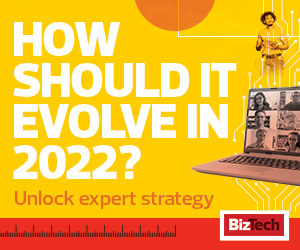Key Questions for Your Employees
This absolutely applies to your customers. Meeting their expectations is only becoming more challenging. As they come to rely on any new capability you create, key questions are worth considering: How effectively can you test it to ensure maximum availability when customers want it, with the right performance and user experience? What can you do to ensure that it won’t break when changes are made?
Going one step further, have you also considered the evolving expectations of your employees and the resulting implications for your business? Are crucial tools available when and where they are needed? If your employees are not equipped with the right tools, it’s going to be significantly harder for them to deliver on the heightened expectations of your customers.
This is all very challenging, to say the least, but there is a positive aspect: The pandemic experience has thoroughly validated the core idea that, done wisely, digital transformation leads to better outcomes for you and your customers.
Going forward, we must assume people and enterprises will continue to use hybrid approaches for essentially all of their activities. Why? Because an “online plus in-person” hybrid is convenient, helps simplify our lives, and offers the flexibility to address dynamic or complex requirements.
There is no going back. The worldwide stress test brought on by the pandemic has amplified the need to accelerate our collective digital transformation.
WATCH: Learn how to lead a team of thousands while building culture in hybrid work.
Tech Isn’t Always the Answer
Surveys by Bloomberg, McKinsey and others show this is already happening: Many or most companies believe the pandemic has sped up their digital transformation by three to seven years (on average, it’s on the order of 5.3 years).
It can be tempting to simply throw the latest, hottest new technology at a problem, hoping that will magically make everything work better and keep customers happy. This rarely produces the desired outcome and, therefore, usually slows rather than accelerates any transformation.
A better way to tackle the acceleration challenge starts with gaining clarity around your business strategy for meeting your customers’ needs. With a strong customer-centric strategy, such clarity includes three essential elements: a crisp definition of your customer set, an imaginative understanding of their unmet needs, and a compelling offering that delivers real value to them.
With that level of clarity established, you can embark on thoughtful (yet fast-paced) planning of the changes most relevant to your business’s digital transformation. You can then move on to the selection and deployment of the right technology to make those changes a reality.
If you want to achieve exceptional performance across your digital platforms, you may be asking, “What does it take?” And you’ll likely want to assess how far you need to reach — from core to cloud to edge, or vice versa — and how far up or down the protocol stack you need to look. It’s also useful to examine how you can validate actual and potential performance gains, and decide what to test in the lab and what to monitor in the field.
If you’re seeking to embrace new use cases or even new business models, which technologies will inspire and enable new possibilities your customers will value and pay for? Depending on your core capabilities, it may be time to consider what kinds of technology partners and collaborators can help you deploy a new concept successfully and in less time.
Click the banner below to unlock exclusive content about enabling a hybrid workforce.













